Bethlehem
Bethlehem is the place of Christ’s birth but also a thriving modern Palestinian city. Today visitors can travel to Bethlehem to see the exact place where Jesus was born. To reach Bethlehem tourists in Israel must go through a border crossing into the Palestinian Authority of the West Bank and travel past places like the Inn of the Good Samaritan and Shepherds’ Field where shepherds watched their sheep on the night of Jesus’ birth. Once in Bethlehem tourists can visit historic churches built to mark specific biblical sites.
Bethlehem rooftop view. Photo credit: © Shutterstock
According to an ancient Hebrew saying, “a man is the fruit of his home’s landscapes.” The Christ is no mere man, of course, but as God sent His only begotten son to walk among us, we should feel blessed for having the opportunity to know Him and walk in his footsteps, as well as witnessing with our own eyes the environment in which He was born.
For that reason, many Christians choose to take a tour of Bethlehem. In order to provide themselves with the best and most convenient tour possible, many Christians choose to take guided Israel tours and receive information about the place from experts who know all there is to know about Jesus Christ, the city, and its connection with Christianity throughout the generations.
When the word Bethlehem rises to mind one could not be held guilty if he or she thinks of faraway biblical times, but as we know Bethlehem is not just a city of the past. Adorned with amazing churches built by many congregations during many different periods, filled with many significant museums and artifacts and containing beautiful natural surroundings, while Jesus’ birth is of course the city’s main attraction, it is far from being the only one. A good tour of the city will not only enlighten you as to what the city was but also show you what it is today.
Bethlehem in the Bible
Bethlehem features in the Old Testament as the birthplace of King David; it is also where Rachel was buried when she died in childbirth giving birth to Benjamin (Genesis 35:19). In the Bible, the city is referred to as Beth Lechem – House of Bread; the City of David and as Ephratah. Bethlehem is mentioned many times in the Bible, for example in Ruth; Genesis; Joshua; Samuel I; Judges, and John.
The New Testament’s Book of Luke and of Matthew tells the story of the Nativity. Joseph and Mary, who was pregnant, traveled from their hometown, Nazareth in Galilee to Bethlehem, near Jerusalem. They made the journey because of a census that required each citizen to return to their ancestral town to register. As Joseph was from the House of David he needed to return to Bethlehem, the City of David. When the couple arrived they found the city overflowing with visitors and no accommodation was available. As Luke tells us: “Mary laid Jesus in a manger as there was no room in the inn.”
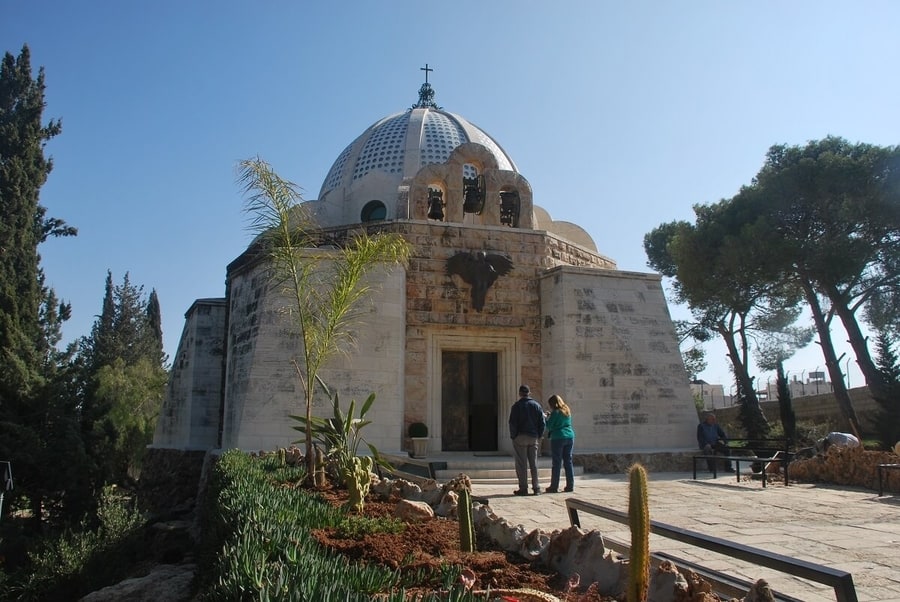
The Shepherds' Field Chapel. Photo credit: © Shutterstock
Bethlehem History
Less than a century after Jesus’ death tradition had established a site in Bethlehem that was believed to be the place of Jesus’ birth. Many houses at the time had an adjacent cave that was used for storage and to house animals and so a cave became the venerated site of the nativity. In the 4th century St Helena, the mother of Emperor Constantine took it upon herself to travel through the Holy Land authenticating biblical site.
In 326 she commissioned a church to be built in Bethlehem around the nativity cave. A part of the floor mosaic of this original church can still be seen in the present Church of the Nativity. St Helena’s church was replaced in 530 by a larger structure that has survived. Under the Crusaders two kings were crowned in this church and it was completely redecorated in 1169. Despite later looting under the Ottomans, fires, and an earthquake the Church of the Nativity has survived.
In modern times Bethlehem came under the British from 1920 to 1948 when the British Mandate was in place. The UN 1947 partition resolution included Bethlehem in the international enclave of Jerusalem which would be administered by the UN. However, just a few months later Jordan captured the city in the 1948 Arab-Israeli War and controlled the region until the Six-Day War in 1967 when Israel captured the West Bank including Bethlehem. Israel administered the city until 1995 when the Oslo Peace Accord placed Bethlehem within the Palestinian Authority West Bank and Israel withdrew from the area.
Bethlehem Today
Today Bethlehem is home to Muslim and Christian Arabs who live mostly in harmony. The city’s economy depends largely on tourism as well as traditional products and handicrafts like Middle Eastern jewelry, olive wood carvings, olive oil, marble, and religious objects.
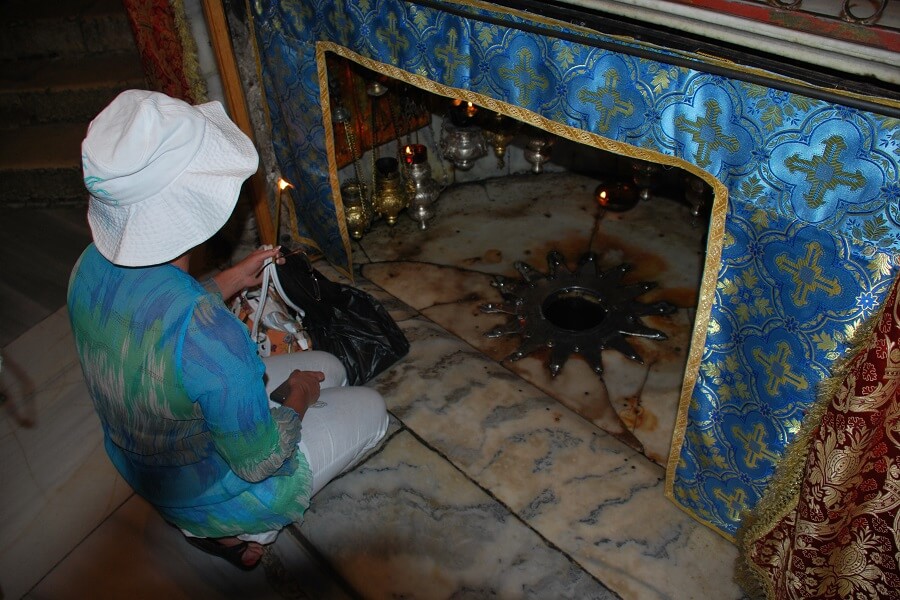
Silver Star Marker of Jesus' Birth Site, Grotto of Nativity, Bethlehem. Photo credit: © Shutterstock
Bethlehem Attractions
Manger Square – This is the first stop for Christina visitors to Bethlehem. Manger Square is bordered by the Nativity Church; the Mosque of Omar and the Palestinian Peace Center. Manger Square is the site of a festive gathering each Christmas Eve of Christians from across the globe who come to celebrate Christ’s birth.
Church of the Nativity – Also known as the Basilica of the Nativity this church is built around the Holy Grotto of the Nativity, the oldest continually worshipped Christian site. Although originally built in the 4th century the present structure dates back to 565 with additions made later by the Crusaders. The earliest mention of the manger site in Bethlehem was by Justin Martyr in c.160 AD followed by a mention by Greek historian Eusebius of Caesarea.
The structure we see today was commissioned by Christian Roman Emperor Constantine and his mother St. Helena in 326 AD. The church was built around the Sacred Cave. The original structure was replaced in 530 AD by a larger church but parts of the Constantinian floor mosaics can still be seen. Miraculously the church was not destroyed when the land came under the rule of the Persians and later Muslim rulers. During the Crusader era of the 11th century, Baldwin I and II were crowned in the Church of the Nativity.
Under the Crusaders the church was renovated and redecorated. The church remained untouched under the Mamluks and Ottomans although precious marble was removed by the Ottomans for use in construction on Temple Mount Today the church is shared by the Roman Catholics, Greek Orthodox, and Armenian Churches.
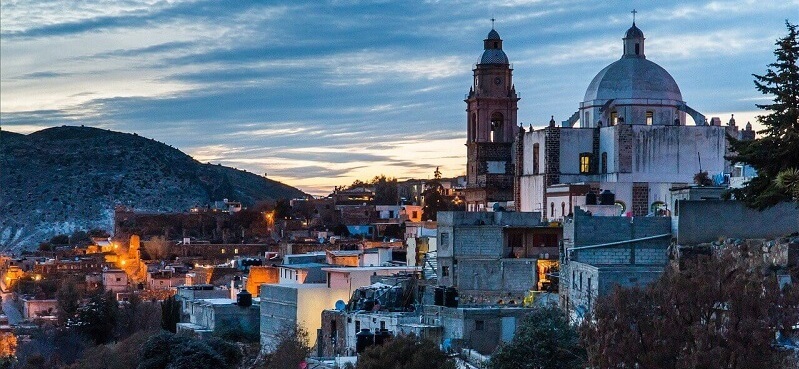
Church of Nativity, Bethlehem. Photo credit: © Shutterstock
Highlights of the church include the Door of Humility; a small entrance to the church that requires visitors to bow down as they enter. It also served a practical purpose during the Ottoman era when looters couldn’t fit their carts through the doorway. The church’s wide nave is flanked by 44 columns painted with Crusader images and the walls are adorned with murals.There are two Greek Orthodox altars and an Armenian altar dedicated to the Three Kings (three wise men). The Chapel of the Manger is a Roman Catholic shrine with 12th-century mosaics. The Grotto of the Nativity lies beneath the church and is reached down a flight of stairs. A silver star marks the place where Jesus was born. A door connects the Church of the Nativity to the Church of St. Catherine.
Church of St Catherine – Alongside the Church of the Nativity stands another historic church marking the site where Christ is said to have appeared to Saint Catherine of Alexandria. It was here that Christ is said to have predicted Catherine’s martyrdom when she was burnt on a wheel (hence: Catherine Wheel) at Mount Sinai in c.310. The church was dedicated in 1347; mentioned in records in the 15th century and enlarged in 1881.

Manger Square, Bethlehem. Photo credit: © Shutterstock
The church is flanked on two sides by a Franciscan monastery where there is a beautiful cloister restored by Barluzzi using 12th-century capitals and columns from the monastery. Visitors to the church can descend a flight of steps to caves where there is the Chapel of the Holy Innocent; St. Joseph’s Chapel; Chapel of St. Eusebius; the Tomb of St. Paula and her daughter Eustochium and the Tomb of St. Jerome. Jerome is said to have translated the Bible in one of the church’s subterranean caves in 386 AD.
Milk Grotto – Also called the Grotto of Our Lady and the Chapel of the Milk Grotto. It was here that the Holy Family took refuge when escaping from Herod’s decree to kill all newborn males (Massacre of the Innocents). As Mary nursed baby Jesus a little of her milk is thought to have dropped to the ground turning the cave surfaces white. A 5th-century Byzantine chapel once stood here and the present chapel dates back to 1872.
Practicalities
Where to eat: Ha’agala, a country café located a short car drive or a beautiful bike ride away from Bethlehem, is a charming place for those who want to combine great food with relaxation. Ha’agala, Ha’Horesh 3, Alonei Aba.
Where to sleep: Talitha Kumi Guest House is known for high standards and great service and is just five minutes walk from the most important destinations. B’eit Jala 7.
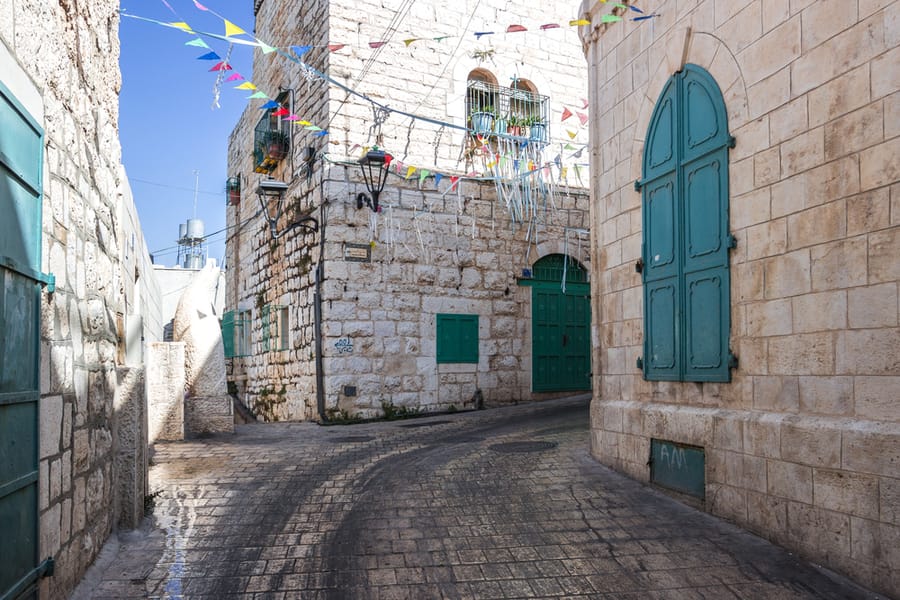
A street in Bethlehem. Photo credit: © Shutterstock
 Login / Register
Login / Register
 Contact Us
Contact Us
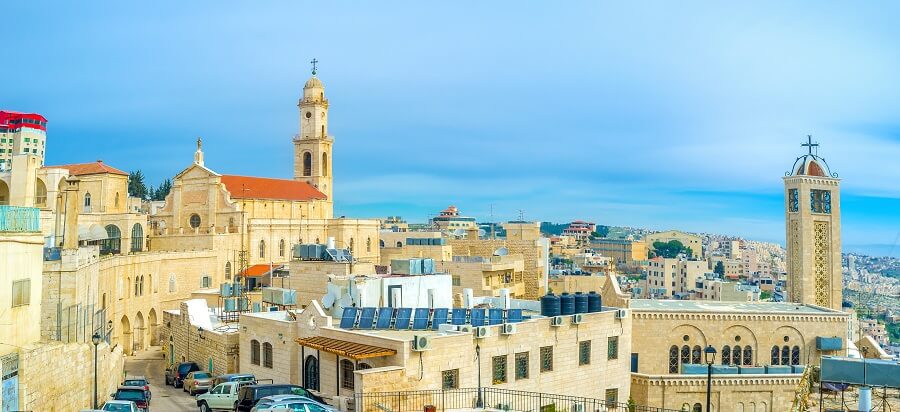
 Certificate of Excellence
Certificate of Excellence Guaranteed Departure
Guaranteed Departure Low Prices Guaranteed
Low Prices Guaranteed 24/7 Support
24/7 Support




